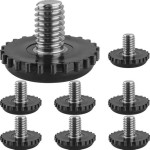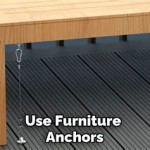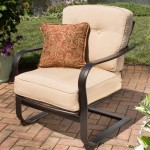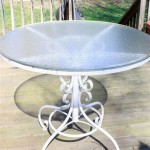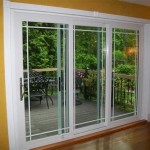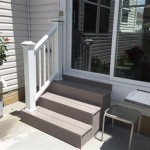Ideas for Small Patio Gardens
Small patio gardens present a unique opportunity to transform limited outdoor space into a personal oasis. Thoughtful design and plant selection are paramount to maximizing functionality and aesthetic appeal in these compact areas. Careful consideration of factors such as sunlight exposure, available space, and desired ambiance will contribute to the creation of a thriving and enjoyable patio garden. This article explores various ideas and strategies for designing and maintaining a successful small patio garden.
Vertical Gardening Solutions
Vertical gardening offers an excellent solution for maximizing space in small patio gardens. By utilizing vertical surfaces, such as walls, fences, and railings, gardeners can significantly increase the amount of planting area without sacrificing valuable floor space. Several options are available for implementing vertical gardens, each with its own advantages and considerations.
Living walls, also known as green walls, are self-sufficient vertical ecosystems that are attached to exterior or interior walls. These structures typically consist of modular panels or pockets filled with soil or other growing media. Plants are then inserted into these pockets, creating a visually appealing and ecologically beneficial green surface. The installation of a living wall requires careful planning and professional installation to ensure proper irrigation and drainage. Appropriate plant selection is crucial for the success of a living wall, with considerations for sunlight exposure, water requirements, and growth habits.
Pallet gardens provide a cost-effective and sustainable option for creating vertical gardens. Old wooden pallets can be repurposed as planters by attaching fabric liners to the back and sides of the pallet, creating individual pockets for plants. Alternatively, planters can be attached to the pallet using brackets or screws. Pallet gardens are well-suited for growing herbs, vegetables, and flowering plants. They are lightweight and easily movable, allowing gardeners to rearrange their displays as desired.
Hanging baskets are a classic and versatile option for adding greenery to small patios. They can be hung from railings, eaves, or specially designed stands. Hanging baskets are available in a variety of sizes and materials, allowing gardeners to choose options that complement their existing patio decor. When selecting plants for hanging baskets, it is important to consider their trailing habits and water requirements. Popular choices include petunias, fuchsias, and trailing herbs.
Trellises and climbing plants offer another visually appealing way to incorporate vertical gardening into small patios. Trellises can be attached to walls or fences, providing support for climbing plants such as clematis, jasmine, and climbing roses. As the plants grow, they will cover the trellis, creating a lush green backdrop and adding vertical interest to the space. The selection of climbing plants depends on the amount of sunlight available and the desired aesthetic.
Container Gardening Strategies
Container gardening is an essential technique for small patio gardens, allowing gardeners to grow a wide variety of plants in a limited space. The selection of appropriate containers and potting mixes is crucial for the success of container gardening. Strategic placement of containers can also contribute to the overall design and functionality of the patio.
Choosing the right containers involves considering several factors, including size, material, and drainage. The size of the container should be appropriate for the size of the plant, allowing ample room for root growth. Materials such as terracotta, plastic, and wood each have their own advantages and disadvantages. Terracotta pots are porous, allowing for good drainage and aeration, but they can dry out quickly in hot weather. Plastic pots are lightweight and retain moisture well, but they may not be as aesthetically pleasing as terracotta. Wood containers are durable and attractive, but they may require lining to prevent rot. Adequate drainage is essential to prevent root rot. Containers should have drainage holes at the bottom to allow excess water to escape.
Selecting the appropriate potting mix is just as important as choosing the right containers. Garden soil is generally too heavy and compact for container gardening. A lightweight and well-draining potting mix is essential for promoting healthy root growth. Commercially available potting mixes typically consist of a blend of peat moss, perlite, and vermiculite. These ingredients provide good drainage, aeration, and water retention. Adding compost to the potting mix can also improve its fertility and drainage.
Strategic placement of containers can enhance the overall design and functionality of the patio. Grouping containers of varying heights and sizes creates visual interest and adds depth to the space. Placing taller containers at the back of the patio and shorter containers in the front creates a sense of perspective. Using containers to define different areas of the patio, such as a seating area or a dining area, can also improve its functionality. Considering sunlight exposure when placing containers is also crucial. Plants that require full sun should be placed in areas that receive at least six hours of direct sunlight per day, while plants that prefer shade should be placed in areas that receive less sunlight.
Successional planting can also be implemented in container gardens to maximize yields and extend the growing season. This involves planting new crops as soon as older crops are harvested. For example, after harvesting lettuce in the spring, gardeners can plant heat-tolerant vegetables such as tomatoes or peppers. Successional planting ensures a continuous supply of fresh produce and prevents the planting beds from sitting empty.
Optimizing Small Space Functionality
In addition to maximizing planting space, optimizing the functionality of a small patio garden is crucial for creating a comfortable and enjoyable outdoor living area. This involves careful consideration of furniture selection, lighting, and privacy.
Choosing the right furniture for a small patio requires careful consideration of size, style, and functionality. Opting for compact and multi-functional furniture can help maximize space and minimize clutter. Folding chairs and tables can be easily stored away when not in use, freeing up valuable space. Benches with built-in storage provide seating and storage in one convenient unit. Choosing furniture that is proportional to the size of the patio is also important. Overly large furniture can make the space feel cramped and uncomfortable. Durability is also an important consideration, as patio furniture will be exposed to the elements. Weather-resistant materials such as teak, aluminum, and resin wicker are excellent choices for outdoor furniture.
Incorporating appropriate lighting can enhance the ambiance and functionality of a small patio garden. String lights, lanterns, and solar-powered lights can create a warm and inviting atmosphere. Path lighting can improve safety and visibility at night. Strategically placed spotlights can highlight focal points in the garden, such as a water feature or a specimen plant. Using a combination of different types of lighting can create a layered and dynamic lighting scheme.
Creating privacy is essential for making a small patio garden feel like a private and secluded retreat. Several options are available for enhancing privacy, including screens, fences, and plants. Privacy screens can be made from a variety of materials, such as wood, metal, or fabric. Fences provide a more permanent solution for creating privacy. Plants can also be used to create a natural privacy screen. Hedges, shrubs, and climbing plants can all be used to block unwanted views and create a sense of enclosure.
Integrating water features can enhance the tranquility and beauty of a small patio garden. Small fountains, birdbaths, and container water gardens can add a soothing sound and visual interest to the space. Water features can also attract birds and other wildlife to the garden. When selecting a water feature, it is important to consider its size, style, and maintenance requirements. Small fountains and birdbaths are relatively easy to maintain, while larger water features may require more extensive maintenance.
Incorporating hardscaping elements such as pathways, pavers, and stepping stones can improve the accessibility and aesthetics of a small patio garden. Pathways can guide visitors through the garden and prevent soil compaction. Pavers and stepping stones can create a more formal and polished look. Choosing materials that complement the existing architecture and landscape is important. Permeable pavers are an environmentally friendly option that allows rainwater to infiltrate into the soil, reducing runoff and preventing erosion.

Small Town Garden Ideas Creating Space

29 Inspiring Small Patio Ideas To Elevate Your Outdoor Living

30 Small Garden Design Ideas Bbc Gardeners World Magazine

Small Space Gardening Tips Tricks Naturehills Com Nature Hills Nursery

Tiny Yards 7 Ideas For Designing A Small Garden In New Orleans The Plant Gallery

Small Garden Design Ideas To Transform Outside Spaces

12 Top Garden Patio Ideas To Try In 2025 Minster Paving

Small Garden Design Ideas London Acacia Gardens

Fabulous Garden Ideas For Small Space Designcafe

60 Small Garden Layout Ideas That Inspire Digsdigs

